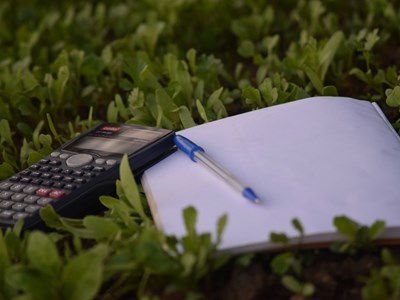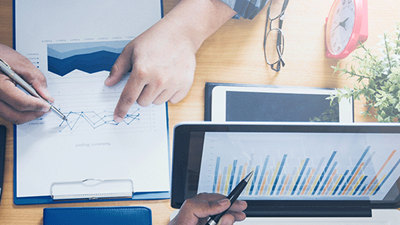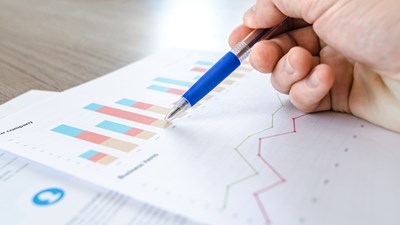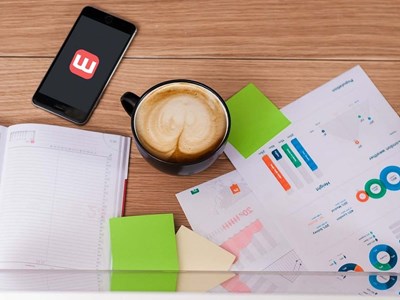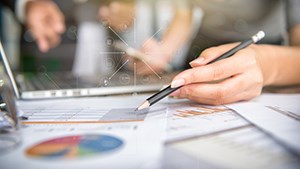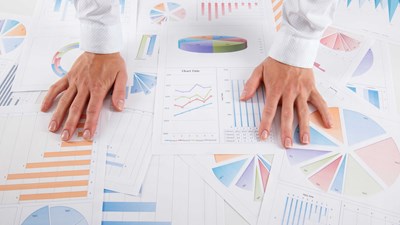.jpg?TS=638923963788190366)
Top FP&A Trends Shaping Financial Planning and Analysis in 2025
Many organisations cope with fragmented planning and data quality issues, which slow down their forecasting cycles. This forces organisations to take practical steps to turn ambition into execution. Therefore, it's understandable why leading financial teams are recognising the emergence of FP&A trends in 2025.
The role now goes beyond number crunching to become a strategic force driving business success. The work of FP&A teams is now reshaped by new technologies and changing business needs. In order to thrive, organisations must embrace these changes, and Mercur offers the modern FP&A software to help make that happen.
The Role of Collaboration in Modern FP&A
FP&A is no longer regarded as an isolated finance function but a collaboration across teams. With business environments growing more complex, finance teams need to work closely with sales, marketing, operations and HR to create plans that truly reflect organisational realities. Shared KPIs and joint planning sessions build mutual understanding and ownership of outcomes, making forecasts more realistic and decisions more aligned.
Elevated collaboration and communication allow FP&A teams to move from reactive reporting into a proactive role. This way, they shape the business strategy with timely insights. It's a process that requires not just technology but also people skills. This enables organizations to have finance teams that can communicate financial insights clearly to different departments and leadership.
High-Ranking FP&A Trends
We did some research and selected some of the best FP&A trends that are changing the way organisations work today. You can also see how Mercur can help your finance teams implement modern financial planning.
Real-Time and Agile Planning
Static, annual financial planning is slowly fading as today's business environment shifts rapidly, demanding agility. In reality, organisations can only forecast up to six months ahead, which makes the long-term predictability harder. Therefore, it's not surprising that FP&A teams need tools that support continuous, real-time forecasting and scenario planning. This, in turn, provides a faster response to change.
Mercur's software aligns perfectly with this shift. It offers dynamic financial models that can be updated instantly with the latest data. Teams use agility to focus planning and budgeting on matching current realities. This way, they avoid delays caused by outdated or manual processes. Real-time insights facilitate things by making decision-making quicker and more confident.
Artificial Intelligence and Machine Learning
Artificial Intelligence (AI) and machine learning (ML) significantly impact many industries, and FP&A is no exception. Although they mostly speed up things, they are also useful in:
Uncovering hidden patterns
Improving forecast accuracy
Automating tedious data tasks
Furthermore, AI in finance accelerates data analysis, which allows FP&A professionals to focus on strategic insights rather than data gathering.
Surveys reveal that 58% of the finance departments started using AI in 2024. This marks a significant 21% rise from 2023. And based on the forecasts made by Gartner, 90% of finance functions will have implemented at least one AI-powered technology solution.
This automation lets teams generate reliable forecasts faster and run powerful scenario simulations. AI also enhances the data quality by reducing manual errors and providing deeper context to financial numbers, supporting better risk evaluation.
Integrated Financial and Operational Planning
Another thing that Mercur supports is linking financial models with operational drivers. It's an alignment that helps financial teams provide a complete business outlook. This integration helps to increase the collaboration between departments and keep the strategic plans consistent with operational goals. As a result, organisations can foresee risks and capture opportunities earlier.
Therefore, it's no surprise that there is a growing demand for integrated planning connecting financial and operational data into one unified view. It's an approach that breaks down silos and ensures that finance plans align closely with business realities like sales, supply chains, and workforce metrics. For concrete steps and benefits, check out the practical guide to scenario planning.
Self-Service and Business Partnering
Today's FP&A teams must be strategic business partners and not just number reporters. This requires access to fast, transparent data and the ability to deliver insights across the organisation. Self-service analytics allow non-finance colleagues to explore data and support collaborative decision-making.
Self-reliant finance and business users alike are also among Mercur's focus group. The platform offers customisable dashboards and intuitive analytics that provide easy access to relevant financial data without dependency on finance teams. It's a great way to drive a data-driven culture and accelerate business partnering.
Hyperautomation Accelerates Autonomous Finance
Integrating data sources and automating routine processes is becoming an advantage that many finance teams use in their work. Mercur excels in reducing the team’s manual efforts and speeds up the monthly close and budgeting cycles, while increasing forecasting accuracy.
With the introduction of hyperautomation, FP&A has been taken to a whole new level of efficiency. What this FP&A trend does is automate repetitive tasks end-to-end. This includes tasks like data collection, consolidation, reporting and reconciliation. FP&A professionals can now spend more time on analysis and less on data wrangling, making finance a true business accelerator.
ESG and Broader Business Metrics
Investors and regulators expect more companies to include sustainability metrics alongside traditional financial measures. This is why environmental, social and governance (ESG) factors have become so important in financial planning. Use FP&A tools like Mercur to embed ESG data into your process and track finance alongside sustainability goals.
Companies use this integrated approach to meet compliance requirements and align with long-term value creation strategies. Additionally, finance teams can deliver richer insights that reflect the broader business impact.
Data Ecosystem Expansion and Advanced Analytics
FP&A teams deal with increasing volumes and a variety of data from multiple business systems. Combining data quickly and extracting meaningful insights without delays can present a challenge. Modern FP&A software integrates diverse data sources into one platform and offers a single source of truth. Furthermore, financial teams can use advanced analytics and visualisation tools to work on anything from high-level financials to detailed operational data.
Bottom Line
Innovation is a key part of the process for FP&A teams that want to stay ahead. The financial teams that have adopted the FP&A trends confirm that they have transformed their planning and decision-making processes.
Mercur is a modern FP&A software that ties directly to these trends. It offers real-time planning, AI capabilities and integrated financial and operational insights. Organisations that have adopted these innovations with Mercur say they are better equipped to drive future growth.
 Blog
BlogWhy is our Excel-based budget always out of date?
Excel creates outdated budgets. Every time someone enters a figure, sends a file, or waits for another department to finish their section, your budget falls further behind reality.
 Blog
BlogBalancing Profitability and Sustainability
Sustainability has become a central concern for organisations across the world — and the UK is no exception. This evolving landscape places new demands on financial reporting.
 Blog
BlogSpreadsheet Risk Management: Best Practices for 2025
Excel has long been a target for hackers; just one click on a malicious attachment can infect your entire network. So, how can you keep using spreadsheets while not sacrificing your safety?
 Blog
BlogBetter Revenue Planning
Sales forecasting is the process of predicting future revenue based on past data and trends. Read the blog to learn the best methods to do it right.
 Blog
BlogRolling Forecasts: Practical Steps, Benefits, and How to Get Started
Financial planning has changed. Traditional annual budgets can’t keep up with rapid shifts in the market, evolving customer needs, and internal performance dynamics. That’s why many finance teams are turning to a rolling forecast model.
 Blog
BlogAI in corporate budgeting
Artificial Intelligence (AI) can support decision making in key areas such as budgeting, capital allocation and even corporate strategy and as a result, it is increasingly being deployed in corporate performance management tools (CPM).
 Blog
BlogFrom static budgets to agile financial management
Traditional budgeting has long been the cornerstone of financial planning in businesses. But today it can become more of a limitation than a strength. That’s where the concept of Beyond Budgeting comes in.
 Blog
BlogThe Powerhouse of EPM Tools
A business’s success heavily relies on having a strong strategy. However, what's even more important is implementing that strategy while tracking and measuring the performance. This can easily be done by investing in enterprise performance management (EPM) software.
 Blog
BlogThe Business Benefits of Integrated Business Planning
This blog explores what IBP is and the typical IBP process. We highlight business benefits and how the right software can be a game-changer for your organisation.
 Blog
BlogHow to succeed with your planning, budgeting, and forecasting process
We know it can be challenging to succeed with your planning, budgeting, and forecasting process. Therefore, we have gathered our best tips for you to succeed!
 Blog
Blog3‑Statement Model for Better Financial Forecasting
Financial forecasting is critical for any business that wants to adapt to change. But finance teams keep usingfragmented models and manual processes. The 3-statement financial model is the solution.
 Blog
BlogCash Flow Forecasting
Inaccurate cash flow forecasting can be a costly mistake for companies. In today’s volatile market, relying on static annual budgets or manual spreadsheets leaves financial leaders without the agility to respond to uncertainty.
 Blog
BlogHow EPM Transforms Financial Planning and Forecasting
Struggling to keep plans aligned in a changing market? Discover how EPM helps finance teams move faster, stay accurate and lead with real-time insights.
 Blog
BlogHow To Create a Successful Budgeting Process
When done well, budgeting helps organisations stay financially on course, even when things don’t go exactly as planned. Learn how to keep things on track so you avoid surprises and stay focused on your goals.
 Blog
BlogHow can AI help CFOs make better decisions?
Artificial Intelligence (AI) has significant potential to enhance decision-making for Chief Financial Officers (CFOs) by providing data-driven insights, automating routine tasks, and enabling more accurate forecasts.
 Blog
BlogTop-Down vs Bottom-Up Budgeting
Budgeting aligns resources with strategic goals, and there are two primary approaches: top-down and bottom-up. Which method wroks best?
 Blog
BlogBest Guide to Improve Your Revenue with Flexible Budgeting
Optimise your expenses with flexible budgeting, and learn how to adjust budget to reflect current business activities, market changes and cost fluctuations.
 Blog
BlogWhat Is Planning, Budgeting and Forecasting?
Planning, budgeting and forecasting are rarely static. Shifts in the industry often require you to revisit assumptions, adjust targets and adopt new processes. Learn how to strengthen your approach and stay ahead of change.
 Blog
BlogWhat is Corporate Performance Management? (CPM)
CPM, or Corporate Performance Management, is a process within corporate management aimed at measuring and optimizing the performance of an organization. CPM encompasses a range of activities, including budgeting, planning, forecasting, reporting, and analysis.
 Blog
BlogBusiness Budgeting Software: How to Choose the Right One
Choosing budgeting software is partly a finance and partly a strategic decision. The right tool helps organisations organise planning cycles, adapt as the market changes and increase accountability across departments. But not every platform will be a good fit.
 Blog
BlogHow Automated Reporting Will Transform FP&A in 2026
This article highlights the power of report automation, how to implement it in your business and explores any new opportunities for accurate financial analysis in the long run.
 Blog
BlogBoost Report Readability, Engagement, and Decision-Making
In today’s fast-paced business environment, effective reports and dashboards are crucial for decision-making. Our user study using eye-tracking technology revealed seven key insights into what captures attention.
 Blog
BlogMastering Spreadsheets
Where many businesses start small, a simple spreadsheet can adequately perform the limited tasks required of it. As the company grows, your spreadsheets can get more complex and harder to manage, by which point it feels like it will be too difficult to move to a different reporting tool.
 Blog
BlogSpreadsheets are not Collaborative Tools
Spreadsheets were never designed for collaboration, yet they are the single most used program among teams and co-workers. They often start out as a quick document for storing, formatting or calculating information but evolve into important documents and are often the core records for an organisation.
 Blog
BlogHow to get accurate financial reports without waiting for month-end
You don't need to wait until month-end to see accurate financial reports. With modern financial systems you can access up-to-date reports whenever you need them.
 Blog
BlogBudgeting in a modern world
Thirty years after its debut, Microsoft Excel is still the preferred tool for budgeting and planning projects. However, its popularity is declining, due in most part to the rise of technology and subscription-based pricing for a myriad of SaaS-based products.
 Blog
BlogRisks with working in spreadsheets
Spreadsheets are an essential tool for all types of organisations and businesses rely on them heavily, particularly for financial computations. The most popular spreadsheet program globally is, of course, Microsoft Excel, it’s used by an estimated 750 million people.
 Blog
BlogWhat Is FP&A? Definition, Purpose, and Best Practices
Without solid financial planning and analysis (FP&A), businesses operate in the dark. In this post we go deeper into the process of FP&A and why it’s important for businesses.
 Blog
BlogInformed Business Decisions at Maximum Velocity
The ability to process information swiftly is essential. If your business can’t manage your data efficiently, your company’s financial performance will surely underperform. At Mercur we have developed our own database Veloxic which helps Financial Planning and Analysis.
 Blog
BlogWhy xP&A is a powerful game-changer
The newest iteration of planning, analysis and reporting systems is a powerful game-changer that unites company departments and boosts competitiveness. It’s called xP&A – the abbreviation of extended financial planning and analysis.
 Blog
BlogThe Hidden Cost of Data Silos
If you ever feel like your teams speak different languages when it comes to data, it is a classic symptom of data silos. The information gets stuck in one department, system or tool, making it difficult for anyone to see the full picture.
 Blog
BlogA practcial guide to scenario planning
Scenario planning gives you a clear, practical way to test assumptions, spot risks and opportunities, and make better strategic choices so your organisation stays resilient when conditions change.
 Blog
BlogFive tips for a successful budget process!
How can you make your budget process more successful and maximise the effort that was invested in creating it? Of course, there are many factors to consider but we’ve chosen to highlight five key areas that will enable and help you create a smoother, value-creating and collaborative budget process.
 Blog
BlogManagement Reporting Guide: Definition and Tips
Management reporting helps you see what’s really happening in your business. In this guide, we’ll explain what managerial reporting looks like and share practical tips.
 Blog
BlogZero-Based vs. Incremental Budgeting
Budgeting sits at the heart of sound financial management. This is why choosing the right technique is crucial for CFOs – it shapes resource allocation, cost control and strategic agility. Incremental and zero-based budgeting are two leading methods that offer distinct approaches.
 Blog
BlogBuild Long-Range Planning for Business Success
Discover how effective long-range planning aligns strategy, finance and operations for smarter decisions and sustainable growth.
 Blog
BlogSpreadsheets Risk the Future of the Business
Spreadsheets often start as just a list for storing information and there is minimal process documentation, support or maintenance for these worksheets. Despite the fact that desktop applications such as Microsoft Office are included in the standard configuration of users' PCs, very little formal training is ever given to spreadsheet users.
 Blog
BlogHow to Effectively Budget with Driver-Based Forecasting
Traditional models of forecasting rely on historical data and beliefs. It uses techniques that identify patterns, which are simple to use. However, with these methods, there are some challenges because they are not dynamic with today’s market, and can’t effectively analyse complex data.
 Blog
BlogAI and Machine Learning, what is it, and why is it important for the future?
Artificial Intelligence and Machine Learning, what is it, and what is the difference?
 Blog
BlogBusiness Intelligence Reporting For Finance Teams
The real challenge today isn’t collecting data, it’s making sense of it and fast. Organisations turn to business intelligence (BI) to convert raw data into insight.But how do you actually do it right?
 Blog
BlogSave time and create a successful budget process
If you’re working in a large organization, you’re probably aware of how time-consuming the budget process can be. In this article we’ll give you tips on how to save time and still create a successful budget process
 Blog
BlogVariance Analysis: A Comprehensive Guide
Senior executives are demanding more detail in their management reports. The amount of data available to finance departments has exploded and decision makers see this as an opportunity to get more insight into how the business is performing.
 Blog
BlogHow do finance teams track KPIs across the entire organisation?
Learn how finance teams track KPIs across the entire organisation by consolidating data from multiple sources into a unified system like Mercur.
 Blog
BlogTop PowerBI Alternatives in 2025
Explore the top PowerBI alternatives for 2025. Discover how Mercur delivers integrated planning, budgeting and reporting without the high cost and complexity.
 Blog
BlogWhat is management reporting?
Management Reporting refers to the process of creating, analyzing, and presenting information about various aspects of an organization's performance to enable decision-makers to make well-informed decisions about the future.
 Blog
BlogAI in Financial Planning: Trends and Next Steps
Discover how finance teams are using AI to drive smarter planning, faster insights, and stronger business decisions.
 Blog
BlogTop 7 Manager KPIs for Financial and Operational Success
In today's post we'll break down why KPIs matter, which ones offer the most insight for finance and executive teams and how to ensure they're actually driving results.
 Blog
BlogThe Collaborative, Smarter Budget
In many organisations manual budgeting processes over-burden staff and create masses of data which overwhelms department heads and stops them seeing the bigger picture.
 Blog
BlogAI in Finance as a Powerful Tool
In this post, we explore how AI is evolving from a theoretical concept into a valuable resource for decision-making. Get useful insights for finance teams at any stage, from early exploration to actively using AI-powered solutions.
 Blog
BlogScenario Planning - Better control during uncertain times
Uncertain times create the need for more frequent forecasts and time for analyzing and comparing different future scenarios. We give you 5 tips on how to simulate future scenarios using scenario planning
 Blog
BlogThe Role of the CFO: Top Priorities and Responsibilities
Today's finance leaders steer more than just budgets and reports. The digital transformation ramps up with the increase of corporate complexity, and so does the role of CFOs.
















